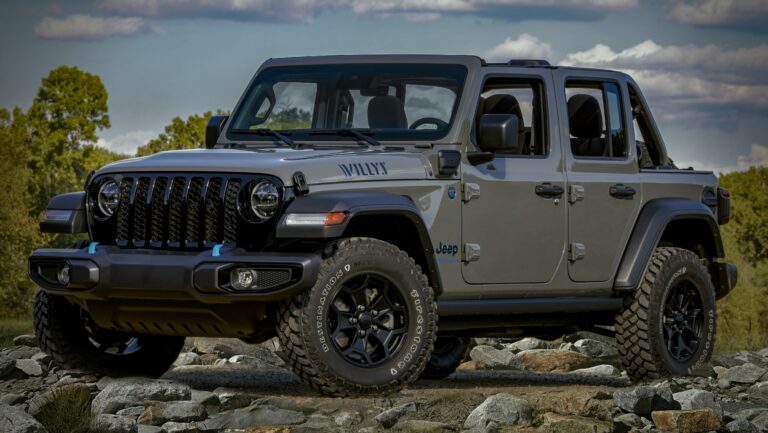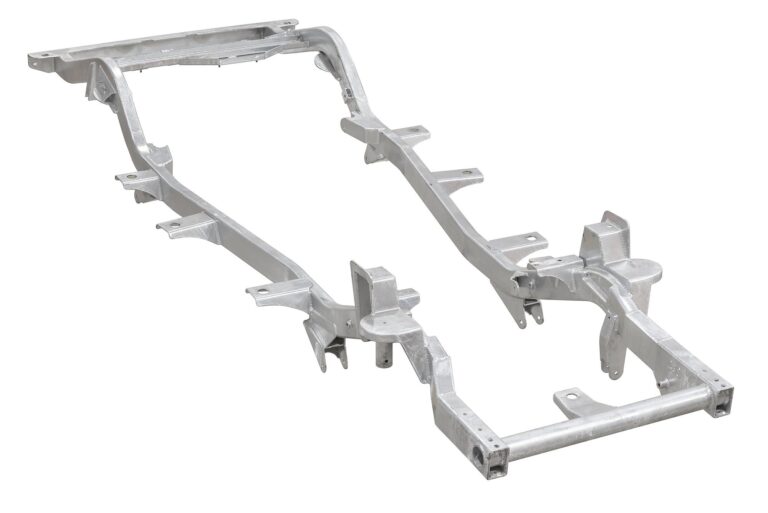Classic Jeep CJ7 For Sale: Your Ultimate Guide to Owning an American Icon
Classic Jeep CJ7 For Sale: Your Ultimate Guide to Owning an American Icon /jeeps.truckstrend.com
The allure of a classic Jeep CJ7 is undeniable. More than just a vehicle, it represents a bygone era of rugged simplicity, boundless adventure, and unadulterated freedom. For many, the CJ7 isn’t just a mode of transport; it’s a statement, a lifestyle, and a piece of automotive history. Produced from 1976 to 1986, the CJ7 (Civilian Jeep 7th generation) refined the legendary CJ series, offering a slightly longer wheelbase for improved stability and comfort, yet retaining the iconic open-air design, removable doors, and fold-down windshield that define the Jeep experience.
Today, the market for classic Jeep CJ7s for sale is vibrant, driven by enthusiasts seeking a robust off-roader, a unique weekend cruiser, or a rewarding restoration project. Whether you’re a seasoned Jeeper or a newcomer to the classic car world, understanding what to look for, where to find it, and how to assess its value is crucial. This comprehensive guide will navigate you through the exciting journey of finding and owning your very own piece of Americana.
Classic Jeep CJ7 For Sale: Your Ultimate Guide to Owning an American Icon
The Enduring Appeal of the Jeep CJ7
What makes the CJ7 so captivating, even decades after its last model rolled off the assembly line? Its appeal stems from a potent combination of heritage, design, and raw capability:
- Iconic Design & Open-Air Experience: The CJ7’s unmistakable silhouette, with its round headlights, seven-slot grille, and flat fenders, is instantly recognizable. Its modular design allows for the removal of doors and the folding down of the windshield, transforming it into an ultimate open-air machine – a direct connection to the environment that modern vehicles rarely offer.
- Legendary Off-Road Prowess: At its core, the CJ7 is a supremely capable off-road vehicle. Its solid axles, robust ladder frame, and potent 4×4 system (typically featuring a Dana 20 or Dana 300 transfer case) make it a formidable challenger on trails, rocks, and mud. This go-anywhere attitude is intrinsic to its DNA.
- Mechanical Simplicity & Durability: Compared to contemporary vehicles, the CJ7 is mechanically straightforward. This simplicity translates to easier diagnosis, repair, and a higher degree of DIY maintenance for the average enthusiast. Its components were designed for durability in harsh conditions, contributing to its longevity.
- Unrivaled Customization Potential: The aftermarket support for the CJ7 is immense. From lift kits and larger tires to engine swaps, interior upgrades, and body modifications, the possibilities for personalization are virtually endless. This allows owners to tailor their CJ7 to their specific needs, whether for hardcore off-roading, comfortable cruising, or show-stopping aesthetics.
- Strong Community & Heritage: Owning a CJ7 means joining a passionate global community. Jeep clubs, online forums, and events provide a wealth of knowledge, camaraderie, and support, making the ownership experience even richer. It’s not just a vehicle; it’s a shared passion.

Key Considerations When Buying a Classic CJ7
Embarking on the search for a CJ7 requires careful consideration of several critical factors that will influence its price, usability, and future maintenance.

1. Condition is Paramount: The Rust Factor
Rust is the archenemy of any classic vehicle, and the CJ7 is particularly susceptible, especially in areas exposed to salt or high humidity. Focus your inspection on these critical areas:
- Frame: The integrity of the frame is non-negotiable. Check for severe rust, cracks, or previous shoddy repairs, particularly around the body mounts, spring hangers, and rear crossmember.
- Body Tub & Floorboards: These are common rust traps. Look for holes or significant corrosion in the floor pans, rocker panels, rear quarter panels, and the tailgate.
- Fenders & Grille: Rust can often start at the bottom of the front fenders and around the headlight buckets.

While surface rust is manageable, extensive structural rust can quickly turn a potential classic into an expensive money pit.
2. Drivetrain Options & Performance
Over its production run, the CJ7 came with a variety of engine and transmission options. Understanding these can help you choose the right Jeep for your needs:
- Engines:
- AMC 258 cu in (4.2L) I6: The most common and highly regarded engine. Known for its torque, reliability, and ease of maintenance.
- AMC 304 cu in (5.0L) V8 & 360 cu in (5.9L) V8: Offered in earlier models, these provide more power but are less common and can be thirstier.
- GM 151 cu in (2.5L) I4 (Iron Duke) & AMC 150 cu in (2.5L) I4: Less powerful, typically found in later models, and generally considered underpowered for serious off-roading.
- Transmissions: Both manual (T-150, T-176, SR4, T-4, T-5) and automatic (TF-999, TH400) options were available. The T-176 (4-speed manual) and TF-999 (3-speed automatic) are generally considered the most robust and desirable.
- Transfer Cases: Dana 20 (early models) and Dana 300 (later models) are both excellent, durable units.
Consider the engine’s originality versus any swaps. A well-executed engine swap (e.g., a modern fuel-injected engine) can significantly improve reliability and performance, but may deter purists.
3. Model Years & Trim Levels
The CJ7 evolved slightly over its ten-year run. Later models (1980-1986) often feature the Dana 300 transfer case (stronger) and wide-track axles (improved stability). Trim levels like the Renegade, Laredo, Golden Eagle, and Limited offered different aesthetic packages, interior comforts, and sometimes mechanical upgrades. While these add to desirability, the underlying condition remains paramount.
4. Originality vs. Modified
Decide whether you prefer an original, unmolested CJ7 (which often commands a higher price for collectors) or a modified one. A modified Jeep might already have desirable upgrades (lift, larger tires, winch), but ensure the modifications were done professionally and safely. Poorly executed mods can lead to numerous problems.
5. Documentation & History
A clear title is essential. Any available maintenance records, build sheets, or receipts for parts and repairs can provide valuable insight into the Jeep’s history and how well it was cared for.
Where to Find a Classic CJ7 For Sale
The digital age has made finding classic vehicles easier than ever, but local connections remain valuable.
- Online Marketplaces: Websites like eBay Motors, Craigslist, Facebook Marketplace, and dedicated classic car sites (Hemmings, Bring a Trailer, ClassicCars.com) are prime hunting grounds. Be wary of scams and always verify listings.
- Specialized Forums & Clubs: Jeep-specific forums (e.g., JeepForum.com, CJ-8.com for Scrambler owners, which share many CJ7 parts) and classic Jeep clubs often have classified sections where enthusiasts sell their vehicles. These sources can offer more detailed descriptions and a more informed seller base.
- Auction Houses: Reputable classic car auction houses can be a source for higher-end, restored CJ7s, but expect premium pricing.
- Local Listings & Word of Mouth: Check local classifieds, attend classic car shows, and spread the word among friends and mechanics. Sometimes the best deals are found through personal connections.
- Specialty Dealerships: Some dealerships specialize in classic 4x4s. While they often command higher prices, they typically offer thoroughly inspected and sometimes warrantied vehicles.
The Inspection Process: A Buyer’s Guide
Never buy a classic CJ7 sight unseen. A thorough inspection is critical.
1. Pre-Purchase Inspection (PPI)
If possible, arrange for a qualified mechanic specializing in older Jeeps or classic cars to perform a PPI. This objective assessment can uncover issues you might miss and is an invaluable investment.
2. DIY Checklist
Even with a PPI, do your own walk-around and test drive:
- Exterior:
- Rust: Re-check all critical areas mentioned above (frame, body, floors). Tap suspicious areas with a small hammer to check for bondo or thin metal.
- Body Panels: Check for alignment, signs of accident damage or poor repair.
- Soft Top/Hardtop: Inspect condition, tears, leaks, and fitment.
- Tires: Check tread depth, age (DOT code), and even wear.
- Underneath:
- Frame: Use a flashlight to inspect the entire frame, especially where components attach.
- Suspension: Look for worn bushings, cracked springs, leaky shocks.
- Driveline: Check for leaks from engine, transmission, transfer case, and axles. Inspect driveshafts and U-joints for play.
- Brake & Fuel Lines: Look for corrosion or leaks.
- Engine Bay:
- Leaks: Check for oil, coolant, or power steering fluid leaks.
- Wiring: Look for frayed wires, dodgy connections, or amateur repairs.
- Fluids: Check levels and condition.
- Start-up: Listen for unusual noises (knocks, squeals), check for excessive smoke from the exhaust.
- Interior:
- Floorboards: Lift mats/carpet to check for rust.
- Gauges & Lights: Ensure all function correctly.
- Seats & Roll Bar: Check condition and mounting.
- Test Drive:
- Engine: Does it idle smoothly? Does it accelerate without hesitation?
- Transmission: Shifts smoothly? No grinding or slipping? Test 4WD engagement (high and low range).
- Steering: Excessive play? Does it pull to one side?
- Brakes: Firm pedal? Does it stop straight?
- Suspension: Any unusual clunks, rattles, or excessive bounce?
- Road Manners: How does it feel at speed? Expect a rougher, louder ride than modern vehicles, but not unsafe or uncontrolled.
Valuation and Negotiation Tips
Pricing for classic CJ7s varies wildly based on condition, originality, modifications, and rarity.
1. Research & Compare
Look at multiple listings for CJ7s of similar year, condition, and specifications. Check "sold" listings on auction sites to get a realistic sense of market value.
2. Condition-Based Pricing Categories
- Project Vehicle ($3,000 – $8,000): Needs significant restoration, possibly frame repair or major mechanical work. Buy only if you have the skills, time, and budget for a full rebuild.
- Driver Quality ($8,000 – $18,000): Runs and drives, generally solid but with cosmetic flaws, minor mechanical issues, or a need for basic maintenance. Good for a rolling restoration.
- Good Condition ($18,000 – $30,000): Solid, presentable, minimal rust, most systems functioning well. Ready to enjoy with minor upkeep.
- Excellent/Restored ($30,000 – $50,000+): High-quality restoration or very well-preserved original. Near-perfect paint, interior, and mechanicals. Show quality or a reliable, turn-key classic.
- Concours/Rare Trim ($50,000 – $80,000+): Flawless, highly original, rare special editions (e.g., low-mileage Laredos, Golden Eagles in exceptional condition).
3. Negotiation
- Be Prepared: Use your inspection findings to justify your offer. Point out any defects or necessary repairs.
- Be Realistic: Don’t expect a perfect vehicle at a project price.
- Don’t Rush: There are many CJ7s out there. If one doesn’t feel right, walk away.
- Cash is King: A cash offer can sometimes give you leverage.
Owning and Maintaining Your CJ7
Owning a classic CJ7 is a rewarding experience, but it comes with its own set of responsibilities.
- Common Issues: Be prepared for typical classic car quirks: occasional carburetor tuning, vacuum line issues, electrical gremlins (especially in older, unrestored wiring), and the constant battle against rust if not properly protected.
- Regular Maintenance: Adhere to a strict maintenance schedule. Regular oil changes, fluid checks, greasing U-joints, and inspecting all mechanical components are crucial for longevity.
- Parts Availability: Thanks to its popularity and long production run, most mechanical and body parts for the CJ7 are readily available, either as NOS (New Old Stock), reproduction parts, or aftermarket upgrades.
- Insurance: Consider classic car insurance, which often offers better rates and agreed-upon value coverage for vintage vehicles.
- Customization: The CJ7 is a blank canvas. Plan your modifications thoughtfully, ensuring they enhance rather than detract from its character and safety.
Classic Jeep CJ7 For Sale: Estimated Price Guide
Please note that these are estimated price ranges and actual prices can vary significantly based on location, seller, specific modifications, and market demand at the time of sale.
| Condition Category | Typical Price Range (USD) | Key Characteristics & Notes




